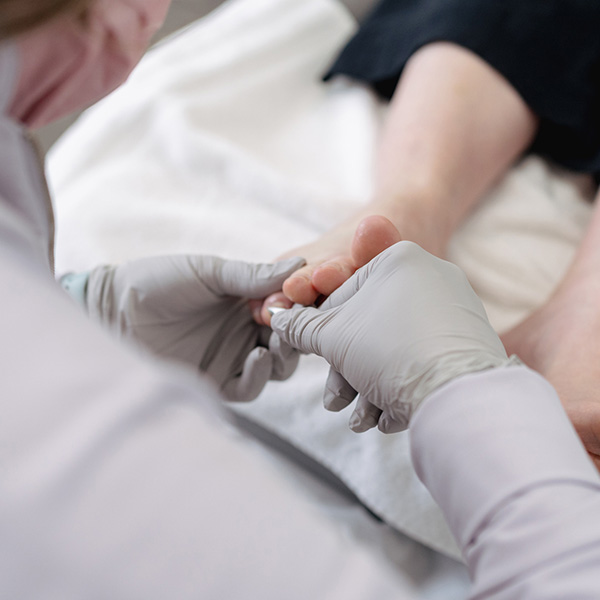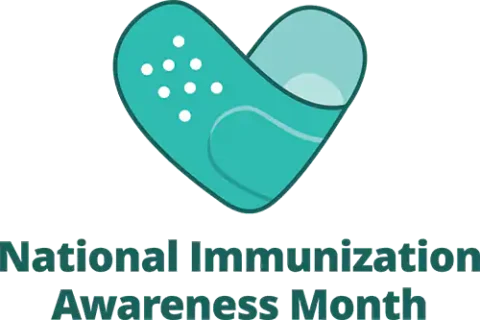Prostate Cancer Awareness Month
The month of September has been designated as Prostate Cancer Awareness Month, a time to focus on one of the most common types of cancer to affect men. Good reasons why early testing, screening and treatment are important.
The Who, What, When, Where, Why of Prostate Cancer
The American Association of Cancer Research (AACR), provides a good synopsis of information surrounding prostate cancer. By the numbers:
*Prostate Cancer is the most common non-skin cancer diagnosed in men.
*Following lung cancer, prostate cancer is the second leading cause of cancer deaths in men.
*In 2021 the National Cancer Institute (NCI) estimate that some 248, 530 men were diagnosed with prostate cancer and more than 34,000 died from it.
*Prostate Cancer tends to be more common in older men and is more likely to occur in men with a family history of the disease, men of African-American descent, those who smoke, are overweight and lack in regular exercise.
*In the United States, about 1-percent of men will be diagnosed with prostate cancer at some point in their lifetimes.
Early Signs and Symptoms
While most prostate cancer does not cause any initial symptoms, early signs of the disease, according to Cancer.Net, include the following symptoms:
*Frequent urination and the urge to urinate during the night (which disrupts healthy sleep patterns).
*Weak or interrupted urine flow or the need to strain to empty the bladder.
*Blood in the urine.
*New onset of erectile dysfunction.
*Pain or burning during urination (less common than other symptoms)
*Discomfort or pain when sitting, caused by enlarged prostate.
It should be noted that other noncancerous symptoms that may indicate medical concerns outside of cancer may include BPH (enlarged prostate) or urinary tract discomfort which might suggest infection of the bladder or other medical concerns.
Additionally, other symptoms that may indicate cancer has spread outside of the prostate gland include:
*Pain in the back, hips, thighs, shoulders or other bones.
*Swelling or fluid buildup in the legs or feet.
*Unexplained weight loss.
*Fatigue
*Change in bowel habits.
How Prostate Cancer Is Detected and Diagnosed
According to the American Cancer Society, prostate cancer may be detected in a number of ways:
- A DRE, digital rectal exam—where a doctor inserts a gloved, lubricated finger into the rectum to feel for bumps or hard areas that may indicate cancer on one side or both sides of the prostate.
- PSA Test—a blood test that measures levels of Prostate-Specific-Antigen, a protein made by cells in the prostate gland. This test will reveal normal cells as well as abnormal cells which could indicate cancer. The PSA blood test is used mainly to screen for prostate cancer in men without symptoms and is one of the first tests done for men having prostate issues.
- Ultrasound and Magnetic Resonance Imaging (MRI) may be used depending on results of initial examination and PSA testing.
- Prostate Biopsy-based on the result of a DRE and PSA Blood tests, a core needle biopsy may be ordered by your doctor. During this procedure a local anesthetic may be given, followed either a transrectal biopsy (inserting a needle through the wall of the rectum, or a transperineal biopsy, a needle through the skin between the scrotum and anus. During this procedure, which takes about 10 minutes, several core samples from different parts of the prostate will be withdrawn, then analyzed.
The resulting pathology report normally indicates one of three things:
*Positive for cancer-cancer cells were seen in the biopsy samples.
*Negative for cancer-No cancer cells were seen in the biopsy samples.
*Suspicious—something abnormal was seen, but the abnormal findings might not be cancerous.
Types of Treatment If Cancer Is Diagnosed
If the pathology results from the biopsy reveal cancer cells are present in the prostate,
Dr. Eric C. Denley, M.D.-Family Medicine with Brevard Health Alliance, explains a number of treatment approaches may be utilized depending on the aggressive or non-aggressive nature of the cancer.
“The Gleason grading system is an important medical tool in assessing the aggressiveness of a previously diagnosed prostate. Tissue samples from a Biopsy may show varying degrees of tissue types.
“The Gleason scale is a grade of 1-to-5 based on how far cancer cells deviate from normal healthy cells,” Denley expands.
“Cancer cells that appear as a Grade 1 are considered least aggressive and cancer cells of Grade 5 out of 5 are considered most aggressive. A high Gleason score does not tell you if the cancer has spread to other parts of the body, it only tells you the likelihood of spread if the prostate cancer is left untreated.”
He adds that often times two tissue samples are graded and a score combined anywhere from 2-to-10 is used to help determine a more accurate predictability of prostate cancer aggressiveness.
“With a Gleason score of 7 or higher, tumor staging is further completed by getting an ultrasound, CT Scan, MRI or bone scan. These images will show if there is any spread to lymph nodes or the rest of the body.”
The BHA Family Practitioner notes that Genomic testing is another medical tool that may be incorporated in determining treatment options.
“Fortunately, treatment options for prostate cancer have been very effective overall for the past 20 years. In general, when you are born you get DNA which is genetic information equally from both your father and mother.
“DNA carries with it all the information which makes you who you are. However, when DNA is damaged, you can develop cancer. Unfortunately, this can be inherited from one offspring to the next through generations.”
But, Denley adds, cancer can still develop in some individuals without the gene mutation.
“Approximately 15-percent of prostate cancer is caused by heredity and about 85-percent is caused by random gene mutations. Many genes from DNA can be tested to determine risk or cause of prostate cancer. This is called multi-gene panel testing. Genetic testing changes treatment options for prostate cancer.
“For example, one common gene mutation for prostate cancer is the ‘BRCA2’ gene mutation. Different genetic mutations dictate many different treatments. Types of treatments include nutrition and lifestyle changes in conjunction with hormonal therapy, monoclonal antibody treatments or the surgical removal of cancerous tissue and radiation therapy in general.”
Denley explains that radiation treatment and surgical treatment are two methods used to deal with prostate cancer deemed aggressive in nature.
“In aggressive prostate cancer, radiation treatment uses high-energy rays to essentially “fry” cancer cells and destroy them. The end effect is tumor growth(s) will shrink and disappear. There is now more accurate radiation therapy through stereotactic radiation and proton therapy which does more damage to the cancer cells and less damage to healthy cells.”
Denley says this approach improves recovery time and overall outcome.
“Surgery is also employed when prostate cancer is able to be manually resected from the body,” he adds, and explains other surgical options.
“The three more common types of surgeries are Radical Proctectomy, Pelvic Lymphadenopathy and TURP (Transurethral Resection of the Prostate). The most common surgery is the Radical Proctectomy which is when your entire prostate gland is removed with the surrounding tissue including the seminal vesicles. This procedure is thought to be overall less risk when compared to the old “TURP” procedure.”
Harkening back to the very purpose of Prostate Cancer Awareness Month, Denley encourages men to pay attention to symptoms of potential prostate cancer, especially as they age.
“Prostate cancer can have much better outcomes if diagnosed early,” says the veteran BHA physician.
“There are several screening tests and recommendations that will improve your outcome. Screening is recommended if you’re a man between ages 55-69 years old, African-American and/or have a family history of prostate cancer.
“The best screening is an annual PSA blood test and DRE (Digital Rectal Examination) which is done by your medical provider. When found early, prostate cancer can be treated early which helps to stop or slow the spread of cancer.
“This will dramatically improve your long-term outcome.”

















































































































































